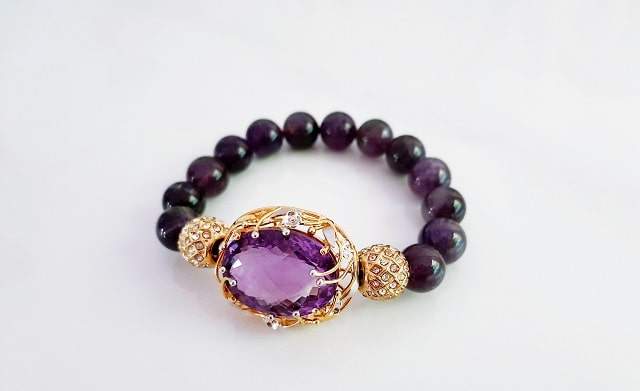Of the many gemstones that are found on our blue planet, none can match amethyst, which has long been a firm favourite for people from all parts of the world. This enchanting lilac-coloured quartz is alluring in more ways than one.
Colours range from very light lilac to deep purple, which is the most valuable. Light violet never used to be in demand, however, in the last few years, that has all changed.
Antique Jewellery
Amethyst was commonly used to make antique jewellery.Visit your local antique shop, among others, to view genuine pieces. If you don’t want to leave the comfort of your own living room, you can also browse the selection of an online antique dealer.
You can, of course, make an online purchase, or you could arrange to visit the antique dealer and enjoy a private viewing.
Ancient Greeks
The ancient Greeks used amethyst as a form of protection; sailors wore a crystal around their necks to prevent their vessels from sinking. Amethyst was thought to protect the wearer from evil spirits, which is also what the Romans believed.
Ancient Romans
The Roman soldiers all wore amethyst to protect against injury and death when in battle and this soon spread to Medieval Europe, while the Anglo-Saxons would steal the amethyst from dead enemy soldiers.
This created a kind of legend that stayed around until the late 18th century, with many people wearing amethyst, believing in the positivity of this unique crystal. Of course, in Medieval times, superstitions were rife and disasters were thought to be the work of angry gods; gemstones were believed to appease the gods.
Ancient Mariners
Seafaring men have always believed that a crystal such as amethyst brings the vessel good fortune and protects the crew against heavy seas. Sailors might have an amethyst ring which they wore all the time, some had a small crystal of amethyst in a small locket, which they wore around the neck.
There were many other superstitions that involved other gemstones, yet amethyst still remains as popular today as it was a few centuries ago.
Victorian Era
This was a period that can be split into 3 sections:the early, middle, and late Victorian periods.The 1920s saw the Art Deco period when jewellery design radically changed. Bold lines, rich colours and geometric shapes are all evident in Art Deco jewellery.
If your partner is in love with amethyst, why not search for an amethyst engagement ring from an online antique dealer? Such an engagement ring would be stunning, with colourful gemstones such as amethyst, amber, sapphires or emeralds.
Deep Russian
The most prized amethyst is known as ‘deep Russian’ and these stones are incredibly rare. Colour is the most important of the 4Cs when it comes to amethyst, and the best stones can be found when you visit the website of a leading antique dealer.
Collecting Antique Jewellery
There are exquisite vintage rings for sale at Kalmar Antiques so look no further than this trusted dealer or those in your local area. Many women love antique jewellery so much that they collect fine pieces, not just for wearing, but also as a form of investment.
Fine antique jewellery appreciates in value over time and if you would like to view stunning amethyst antique jewellery, Google will take you to the website of a leading antique dealer.
Global Connections
Any of the leading antique dealers would have connections to many other dealers around the world, which means they are able to source specific pieces. Whether you prefer Edwardian, Georgian or Victorian periods, the dealer has a large catalogue of genuine antiques, all at very affordable prices.


